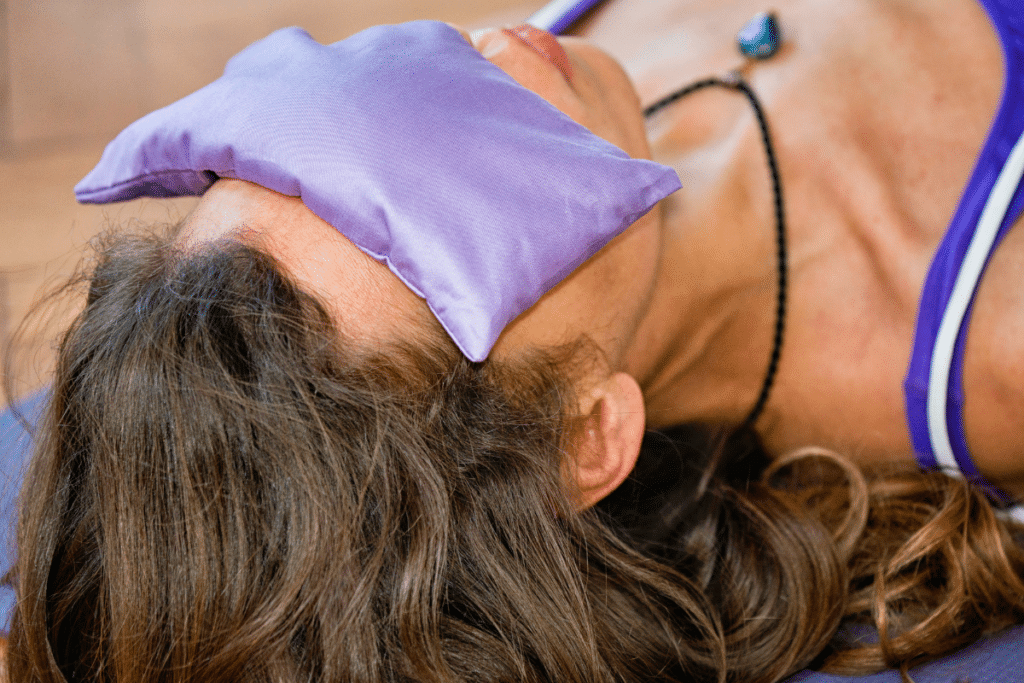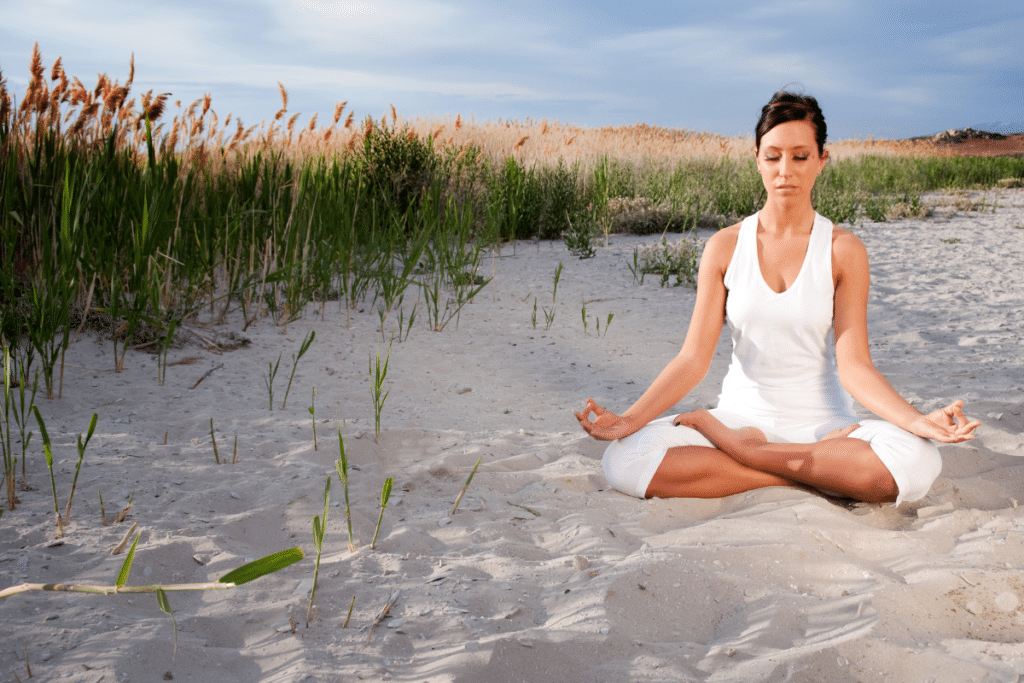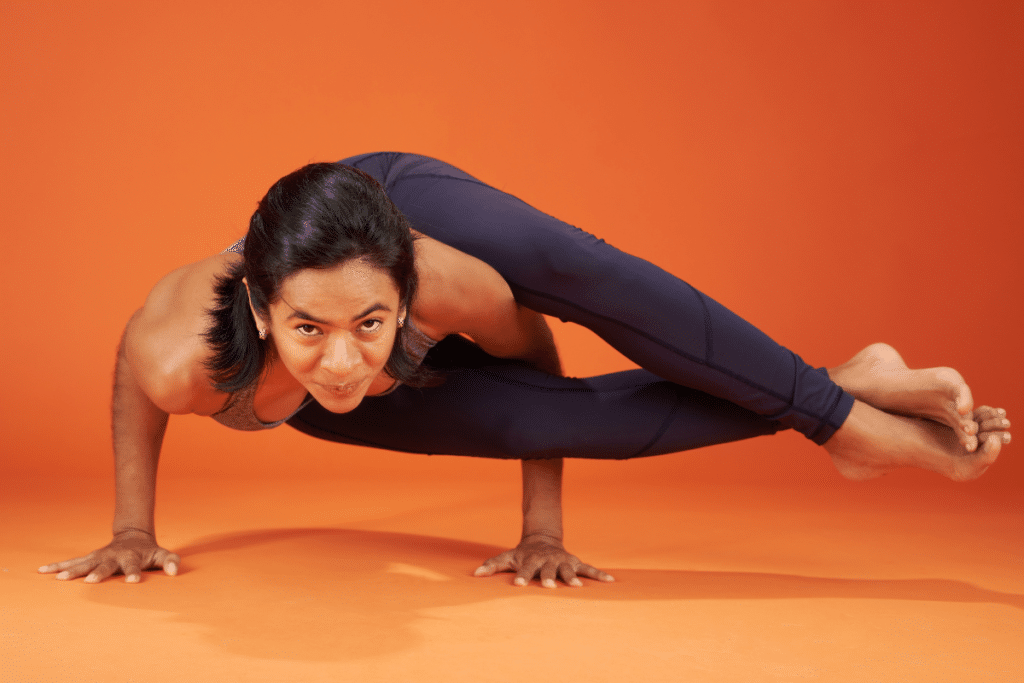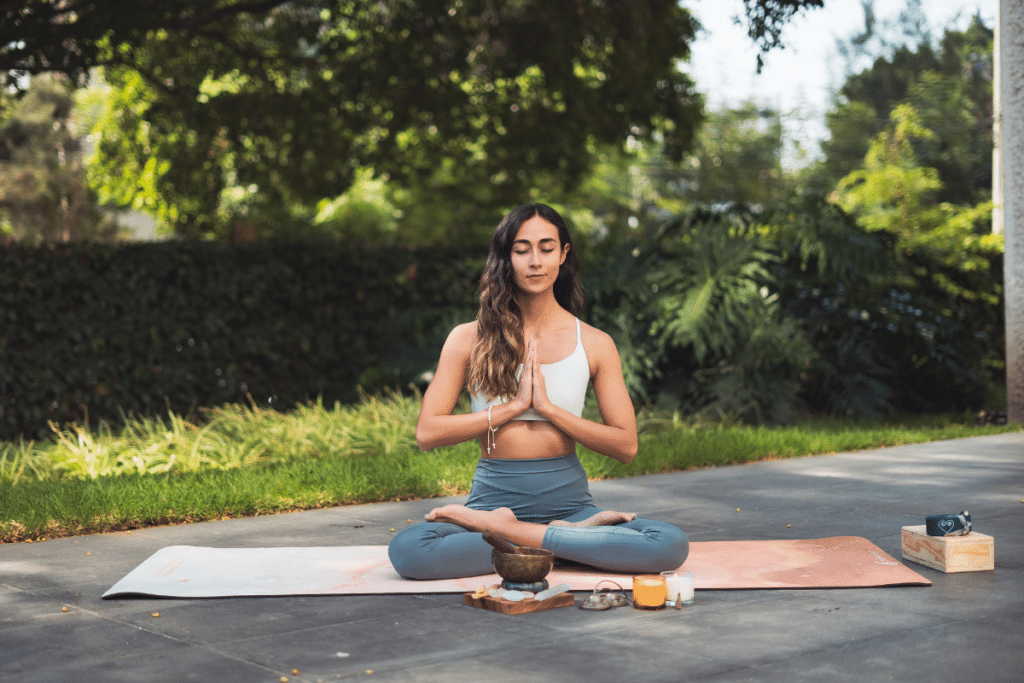Pratyahara: Harness Your Prana for Inner Awakening

This series builds on our introduction to Patanjali’s Eight Limbs of Yoga. We dive deep into each step on the yogic path to liberation. This article focuses on the fifth limb – pratyahara. Let’s have a quick recap of all eight limbs first.
The Eight Limbs of Yoga
The Eight Limbs of Yoga is a system of morals and techniques that has been designed to help us control the mind and body. We can only dissolve the ego and attain Moksha (liberation) through self-mastery.
The Eight Limbs of Yoga are:
- Yama
- Niyama
- Asana
- Pranayama
- Pratyahara
- Dharana
- Dhyana
- Samadhi
What is Pratyahara?
Now we begin to explore the second half of the path to liberation. Leaving behind the four external limbs, we enter the realm of the more focused yet subtle states. No longer concerned with physical posture or breath, we focus the attention inward.
Pratyahara means to withdraw energy from the senses, and it is the first step towards meditation. Pratya refers to the idea of ‘withdrawing,’ or ‘drawing back.’ Ahara describes all the sensory stimulation we are exposed to, such as sights, sounds, smells, and physical sensations.
When we sit with the intention to meditate, usually, the first thing we do is take a few deep breaths to focus the mind (Pranayama) and then turn our awareness inwards and away from the outer experience. This is pratyahara, sense withdrawal.

What Pratyahara is Not
Pratyahara may be the most difficult limb to understand because there is a misconception about its true meaning. Pratyahara is often defined as the withdrawal of the senses. It is thought that pratyahara means turning off our senses completely. That through concentration, we can somehow flick a switch and shut down our ability to sense the outside world. This is not how pratyahara works, and those who attempt and fail to switch their senses off are often disappointed and lose faith in their ability to practice.
Pratyahara isn’t about losing the capacity to see, hear, smell, and feel. Instead, it is entering into a state of mindful absorption of inner awareness. External sources of sensory stimulation ordinarily serve to pull our attention away from our inner world – the place we go when entering into meditation.
Think about a time during meditation when you became distracted by a sound coming from the building or the street outside. If you were meditating by focusing on your breath or visualizing something, your attention was likely pulled away from that inner focus and settled on the external stimulus of the noise.
When we reach a state of pratyahara, we are so intently focused on the inner world; outside influences are unable to pull our awareness away from the practice. We become so absorbed in our practice that sensory stimulus does not disturb our concentration, and we can meditate without becoming easily distracted.
When you have been practicing these techniques for some time, it is possible to become so absorbed in the present moment that you are not easily distracted by outside influences such as sensations and sounds. This day-to-day focus is one of the many benefits of bringing yoga’s spiritual teachings into your life in a serious and committed way.
Pratyahara and Kundalini
As we have discussed, pratyahara is not withdrawing the senses themselves – it is removing the prana from the senses. Focusing our attention inwards using the breath or our imagination is essentially a way of directing our prana into the core of our energetic system – the Sushumna nadi and the chakra system.
We want to use our prana to facilitate the rising of our Kundalini energy from the Muladhara chakra in the base of the spine, all the way up the central energy pathway that runs alongside the spinal column into Sahasrara chakra at the crown.
If we do not practice pratyahara, then we will lose a lot of our prana when we inadvertently follow the sensory stimulus. Our energy is projecting outward and leaving the body, rather than projecting inwards and fueling our inside world and spiritual progress.

Pratyahara for Protection
There is a lovely analogy from Dr. Hansaji Yogendra, likening pratyahara to the ability of the tortoise to protect himself. When the tortoise feels threatened, he pulls all his limbs inside his shell and is protected from predators and threats.
We can see pratyahara as the same – when we feel threatened, overwhelmed, or bothered by the outside world, we can go inwards to find respite and sanctuary. Going inwards is helped by using pratyahara, choosing to focus on our inner world, and finding clarity and peace.
We have such overly stimulating lives – from the moment we wake up until the moment we go to sleep, we are receiving sensory input. This constant flux and flow of information takes its toll on our mental, emotional, and spiritual health. It is crucial for our wellbeing that we practice pratyahara.
Becoming absorbed in our inner world provides some much-needed respite from the constantly fluctuating external world. It helps us release stress and tension, providing greater focus and clarity of mind.
Taking regular meditation and sensory withdrawal time also increases our ability to handle stress. We learn that we can choose to respond to our stressors rather than having our usual knee-jerk reactions, which we often regret later.
Pratyahara on the Mat
If you have been a yoga practitioner for some time, you will most likely have become adept at pratyahara without even knowing it. The pose at the end of every yoga class, providing the teacher gives enough time to it, is an excellent example of harnessing the power of pratyahara.
In Savasana, you begin by attending to the comfort of your physical body, and then you move on to your energetic and mental bodies. The action of relaxing the muscles and relaxing the mind clears the way for inner focus. The teacher may instruct you to focus your awareness on your breath, or a specific chakra, or guide you through a visualization technique. All of these actions serve to bring your focus inwards, drawing away from external input.
You can still hear the voice of the teacher or other external sounds. You may also still be aware of the sensation of the breeze on your skin or the pressure of the floor. You register these sounds and sensations, but you do not react to them. Your attention is inwards, and your prana follows. There is no disturbance caused by these external stimuli as you are totally absorbed in your practice. That is pratyahara.
You can decide to use pratyahara throughout your entire practice, rather than simply saving it for Savasana. It is easier to do this when you are self-practicing, but it is still possible during a group class. You may relish the extra challenge that a teacher-led group setting brings!
When you enter the pose, at what point can you find that line of comfort between effort and surrender? When you find this place, you can begin to focus your awareness and prana inwards. Yin yoga is an excellent style for this because you hold the poses for a lot longer, plus you are supported by props, so you can let go into the posture much more deeply. These things perfectly support the introspection and focus on the breath that is characteristic of yin yoga.

Meditation and the Fifth Limb
In Patanjali’s Eight Limbs of Yoga system, pratyahara comes directly after pranayama and before dharana for a reason. It is this flow from one element to the next that facilitates the realization of samadhi. We need to pass through these steps in order to prepare ourselves for the last limb. Every limb from one to six prepares us for steps seven and eight – dhyana and samadhi. Pratyahara is the beginning of the mind-based preparations.
Withdrawing the senses from our external experience to our inner world at the beginning of meditation usually involves focusing on the breath. Through this observation, we can see the natural flow from pranayama to pratyahara, and then on to the next limb, which is dharana (focused concentration).
In order to achieve dharana, we need to engage pratyahara. We need to direct our prana inwards and attain absorption, which then leads to the development of dharana. With this focused concentration, we can achieve deeper states of dhyana (meditation).
So we can see how pratyahara is the precursor to attaining the deeper meditative states necessary for us to move into samadhi. If we are constantly being pulled out of our meditation because of uncomfortable sensations or intrusive sounds, we won’t progress to the next steps on the path.
Pratyahara off the Cushion
As you become more experienced in yoga and meditation, you can begin to take pratyahara off the mat. In fact, you will probably find that it happens quite naturally. You become a better guardian of your inner landscape. You are less affected by outside distractions, and your focus and clarity of mind improve.
We will never be able to avoid conflict and unwanted stimuli. Even if we retreated to a cave in the mountains to spend all day meditating like the ancient yogic sages, we would still experience conflict from within. Cultivating a proficiency in pratyahara means that we do not need to try and escape conflict and external stimuli to find peace. We experience peace standing exactly where we are – in the midst of it all, and find we have the space to choose our responses.
We cannot control the decisions and actions of others. We cannot control the external input we must receive on a daily basis, or the happenings of the world at large. The experienced yogini realizes that the only thing she can control is how she decides to use her prana.
She can continue to allow her energy to be pulled in all different directions by whatever is happening in her life. Or, she can direct that prana inwards, becoming absorbed in the awakening of her inner world. The latter option gives her the space to pause and choose her response. She makes wiser decisions that aid her spiritual and personal evolution and benefits those around her.
Conclusion
Pratyahara is the first step of the second half of Patanjali’s Eight Limbs of Yoga system. It is the withdrawal of prana from the sensory organs in order to direct it inwards to fuel inner focus and awakening. Pratyahara is a mandatory precursor to the deeper states of meditation necessary for the attainment of samadhi.
Pratyahara can be beneficial in everyday life, too. It allows us to slow down and choose our response to external conflicts and stimuli instead of reacting in our habitual way. When we have practiced using pratyahara on the cushion and the mat, we find that the benefits naturally infuse into our everyday lives. We can stand amid the winds of life and change and maintain our focus and intention.
We hope that you have enjoyed this article on the fifth limb of yoga. If you have missed any of the series so far, you can catch up now:
The Eight Limbs of Yoga: Patanjali’s Path to Liberation
The 5 Yamas of Yoga: Universal Morality
The 5 Niyamas of Yoga: Personal Behavior
Asana: The 3rd Limb of Patanjali’s Path to Freedom
Pranayama: 4 Powerful Life Force Extension Methods
As always, we are here to help. Post any comments or questions below, and we will get back to you. Join our newsletter for exclusive content, the latest Goddess Scrolls, news, special offers, and transformative events. Join us in our Sacred Circle forum to mix with fellow Goddesses, receive and offer support, and ask the Femigod team of experts anything you like concerning your spiritual journey.







[…] Pratyahara: Harness Your Prana for Inner Awakening […]
[…] Natalie Heath April 22, 2022 0 Comments […]